#citizen science
Text
Apparently if you find a tagged Horseshoe crab and report it to Fish and Wildlife they’ll send you a certificate with info about your crab AND a pewter horseshoe crab pin! Keep your eyes peeled 👀
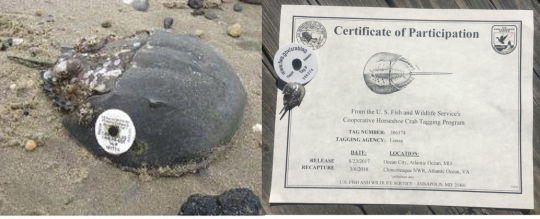
(Photo from the Nantucket Conservation Foundation)
#citizen science#horseshoe crabs#animals#biology#cool#I want that pin so badly but I refuse to buy one it must be earned#zoology#fwc
114K notes
·
View notes
Text
Forget hot girl summer it is
Citizen Science Summer!
Get on eBird, iNaturalist, Seek, whatever apps and forums are cool to you and discover the huge variety of life right under your nose! Snap some pics and record those critters! Rejoice for native bees and plants growing wild by the roadside!!
#ecology#citizen science#ebird#inaturalist#seek#nature#biology#native plants#ecosystems#citizen science summer
2K notes
·
View notes
Link
“A young scientist who worked in the jungles of Thailand has been awarded a national prize for his invention of a $2 paper microscope that can be taken on field expeditions.
If a scientist wants to study something at the microscopic level, they need a microscope, which if they are deep in the Amazon Rainforest presents a serious problem.
Stanford University bioengineer Manu Prakash saw in his team’s $50,000 microscope a serious contradiction. As well as being bulky and ridiculously challenging to transport to remote locations, it needed training from skilled technicians to know how to use it. It also had to stay well out of the weather and other environmental impacts.
So he invented a portable one. Costing $1.75, the Foldscope has a 140x zoom, which is a small enough field to see a malaria parasite inside a cell...
“I want to bring science into everyone’s hands, make it more personal,” Prakash told CNN. “We have decoupled everyday life from the process of science.”
The ultimate in schoolhouse science, Prakash’s invention has sold 1.6 million units, mostly to schools in America, but serious scientists are also using it—like Dr. Kirti Nitnaware in India who works on the isolation and characterization of bioactive metabolites in cyanobacteria.
She used the Foldscope last year to isolate a new species of cyanobacteria. For this and other reasons, Prakash received the 2022 Golden Goose Award from the American Association for the Advancement of Science (AAAS), parent company of the scientific journal, Science.
“The Golden Goose Award reminds us that potential discoveries could be hidden in every corner and illustrates the benefits of investing in basic research to propel innovation,” said Sudip S. Parikh, chief executive officer at AAAS.” -via Good News Network, 9/20/22
#science#citizen science#thailand#stanford#microscope#science and technology#golden goose award#microbiology#malaria#good news#hope
5K notes
·
View notes
Text
Tonight we were lucky to meet this Very Fabulous Baby Pobblebonk Frog at the Frog Census in Reservoir!
315 notes
·
View notes
Text
From water-testing polluted rivers to measuring radiation levels, ordinary people are taking environmental research into their own hands.
#good news#environmentalism#science#citizen science#science is too important to be left to the scientists#environment#nature#water#clean water#water is life#conservation#environmental movement#direct action
366 notes
·
View notes
Text
Citizen Science and Contributing To Scientific Endeavor When You're Not "A Scientist"
Comments on some of my posts about science and misinformation express frustration with scientific establishments, and want to see more accessibility and attention given to amateurs participating in the scientific process and having their scientific voices heard.
If being involved in the creation of knowledge and discovery is something important to you, that's something I strongly encourage! It's absolutely possible. Amateur researchers with a passion and an eye for detail have made some fantastic discoveries - but what is often glossed over in stories like these are the years of work, the patient dedication, and the collaboration with university researchers that often underlie such discoveries.
The search for truth and information and the passion for science is present in a lot of people who aren't official "scientists" - curiosity is natural! And if participation in scientific observation, hypothesizing, experimentation, and discovering new things about the world is important to you, there are lots of ways to go about contributing - and the new year is a great time to start.
What are you interested in?
Ecology
Observing the world around you is for everybody. Getting invested in the environment of your hometown is for everybody. And, as the Mythbusters famously said,
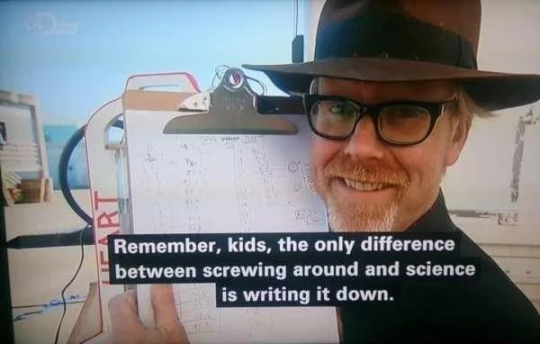
Some ideas for a local ecology project:
Record the temperature outside every day at the same time - at sunrise, or noon, or sunset, or midnight. Depending on where you are, the local weather recording station may be miles away or on top of a mountain - measure the temperature yourself and compare it each day to what your app says. When is it accurate? When isn't it?
Record the weather every day. How much precipitation? What time of day? What kind?
Record what animals you see every day, where, when, and how many. Or choose a specific animal, like birds, or bees on flowers, or turtles or frogs in a local pond, or whiptail lizards vs. invasive house geckos, and record the numbers you see each day.
Record when in the year you see the first, or last, of a plant or animal. When the crocuses sprout, when the buds appear on the maple trees, when you see the first clover flowers or prickly pear flowers, when the first robin comes out or the first lizards come out of hibernation.
If you have an outdoor cat or a free-roaming dog, attach a GoPro or similar small camera to its collar to see where it goes and what it does.
Identify the plants growing in your neighborhood, and check in on it regularly to keep track of how each one fares in different weather conditions, or if any animals particularly like or don't like to eat it.
Bulk order some test strips, then take a small sample of soil from a local park or water from a local waterway each weekend and test them for PH, lead, chemicals, or whatever. See if it changes over the year, or after a heavy rainfall, or during drought.
Take a photo of the same spot every day for a year.
Linguistics
The study of how people use language! Everybody uses language in some capacity.
Do you have any small children near you? Talk to them! Record how they pronounce things and what they call new (or even familiar) concepts. Look for patterns.
Ask people you know if "dog" and "blog" rhyme, or if "Alohop" is a good pun for a pineapple beer. My family gets ENDLESS amounts of mileage out of this one with each other. Ask people you know questions about how they pronounce things, or what they call things. Make maps of dialectical differences between generations, neighborhoods, etc. Track linguistic shifts in the modern world.
History
Everyone and everywhere has a history, and accurate history is pressingly relevant always.
See if you have a local historical society, library archive, or history museum that is looking for volunteers to transcribe or translate collections.
Get elbow-deep in local archives. You likely have some sort of local archive near you that has not been fully digitized. Go in with a topic you want to learn about - Black families, Jewish communities, how your hometown transferred from Indigenous hands to settler ones, women who owned their own businesses, immigration, inter-racial relationships, sports, ice harvesting, farming practices, contemporary opinions on a major world history event that now seems so inevitable, sports and people's reactions to sports - and read everything in newspapers, wills, deeds, photographs, or other available records about your topic of choice. See if you can find connections that you haven't seen anyone else talking about.
These are just some things that occur to me immediately as something that anyone can do, if you're sufficiently interested in a question and want to discover more about it. The more local your topic, the less likely anyone has a solid answer to whatever you're wondering - and the more immediately relevant to the people around you your discoveries may be!
Combining it with a New Year's Resolution can also get you more motivated to do the things you want to do. Is your resolution to get more exercise? Take a brisk walk each morning and take a picture of the same area every day for a year. Take a walk every weekend down to the lake and count the turtles and frogs you see. Is your resolution to keep a daily diary For Real This Time? If nothing else, resolve to write down the weather and precipitation each day! Do you want to volunteer more or meet new people? Look for citizen science or local history groups! Feeling like you're working toward something Real is a great motivator.
Henry David Thoreau's detailed descriptions of the nature each day around Walden Pond in the 1840s provides a valuable benchmark for modern ecologists to compare environmental and climatic changes since then on a granular level. Silly rhyming poems and idiosyncratic spellings in letters and diaries help linguists track dialectical and pronunciation changes across time. Amateur science is great and valuable! We all can have a part in understanding and paying deeper attention to the world around us, if we want to.
#been sitting on this one for a while ever since I kept getting comments on my post about misinformation about how scientists are all#ivory tower eggheads who don't allow real normal people to Contribute to Science#Please contribute to science! I think everyone who wants to should!!!#science#citizen science
290 notes
·
View notes
Text
REBLOG FOR THE FLOWER
#polls#polling#tumblr polls#plants#flowers#science#botany#nature#environmentalism#fun#poll#beautiful#cursed#art#bees#biology#citizen science#science side of tumblr#lol#insects
171 notes
·
View notes
Text
East Coasters! Submit your Felt Reports:

81 notes
·
View notes
Text
A friend of mine sent me this great quiz that's linked to a research project on how we perceive sounds compared to how various other animals hear them. I took it this morning and ended up aligning with frogs, so I guess I'll wear my "Honorary Amphibian" hat from Willapa NWR with extra pride.
Tag yourself with your result!
#animals#nature#study#research#citizen science#wildlife#quiz#fun#ecology#hearing#sound#music#birdsong#frogs#mammals#amphibians#the Music Lab
120 notes
·
View notes
Text
I’m not sure whether you’re into bugs other than inverts but figured I’d share with you as a fellow bug lover some rather exciting stuff I’ve been documenting over the past few months.
One afternoon while mowing the backyard I accidently almost mowed over the top of a caterpillar I hadn’t ever seen before. Now I have a small side hobby of raising caterpillars I find in my yard so I scooped this one up and secured it in my bug observation/raising box.
After some searching around I found out that the caterpillar was that of a moth species which according to the species’ database page is ‘little documented’
I took this as saying ‘hey bro, you should totally raise this one and document everything. For science.’
So that’s what I did. I’ve been in contact with the guy who runs the Lepidoptera database website for my country regarding my observations and at this point one of my photos of the caterpillar is published on the site as well as some information I’d documented regarding two whole new previously unknown food plants the species favours.
I collected the caterpillar November last year and released it as an adult female moth just a few days ago.
I’ve sent my final observation notes to the Lepidoptera guy so perhaps more of my documentation will be added to its species page particularly since I was able to document the three main life stages from caterpillar to the process of constructing the cocoon and the emergence of the adult moth.
Here are some photos for your viewing pleasure. The species in question is Anthela Acuta.
Caterpillar:

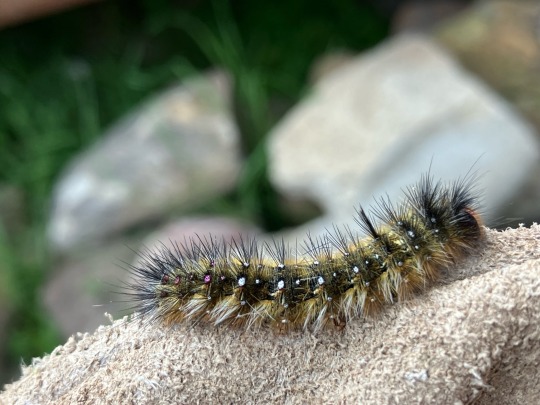
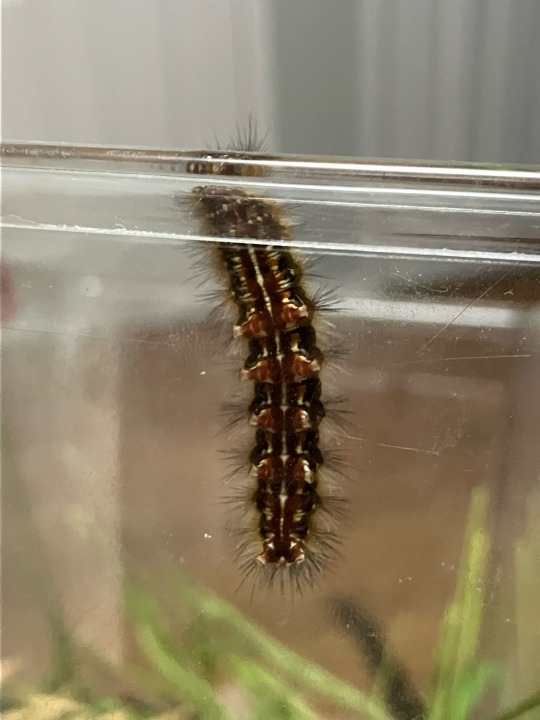
Next instar post-shed:
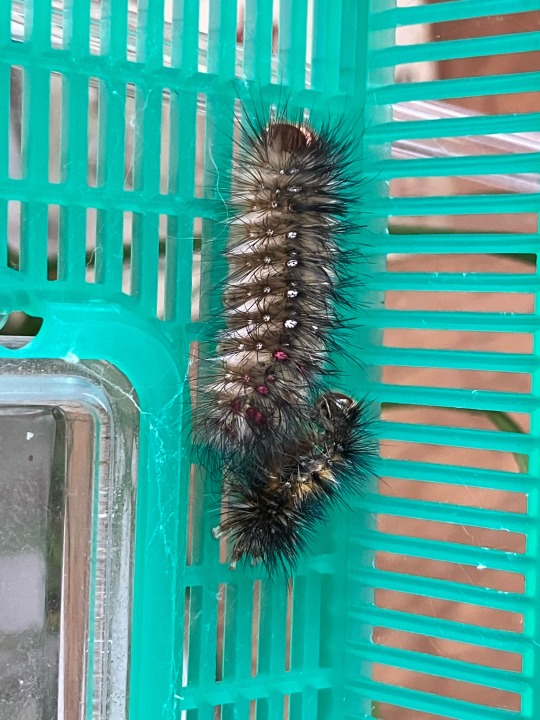
Cocoon formation:



Empty cocoon and pupa shell:

Adult moth (Female):
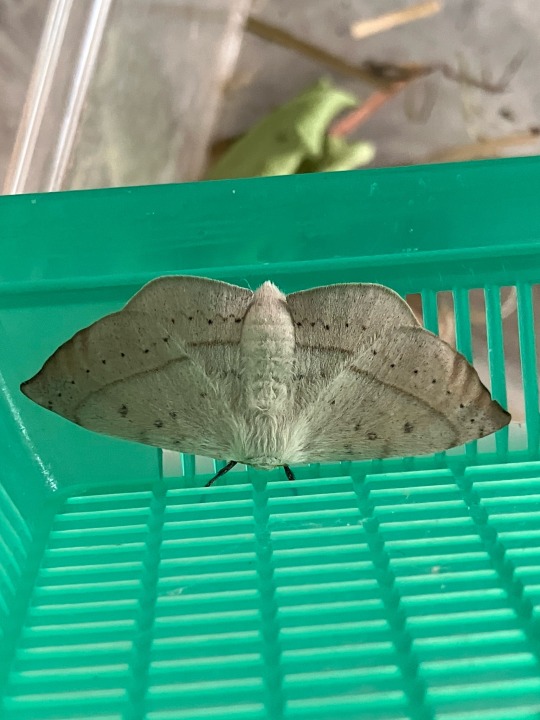
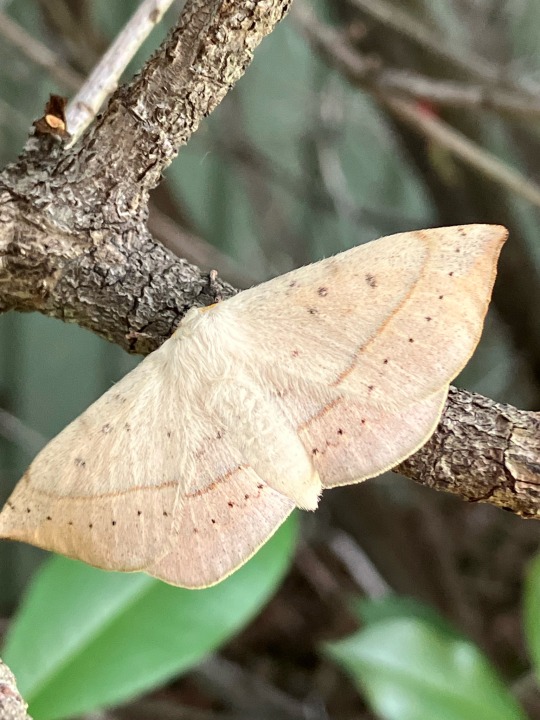
---
um this is INCREDIBLE thank you SO MUCH FOR SHARING!!! everyone follow this person's example and be a citizen scientist!!!!
166 notes
·
View notes
Text
online citizen science projects are like coolmathgames for me
62 notes
·
View notes
Text
While the new finding comes from a small sample of one bat species, “I have no doubt that this is more widespread,” [Nicolas] Fasel says. The behavior likely occurs among other bats whose females have a similar tail membrane, [Teri] Orr says. Beyond the “gee-whiz” factor, these findings reveal important gaps in researchers’ knowledge about bat reproduction, she adds. “Bats are such a poorly understood group, and they tend to be vilified,” Orr says. “At the end of the day, if we don’t understand their reproductive biology, we’re going to be really challenged when it comes to conservation.”
39 notes
·
View notes
Text
In 2016, when the Revolutionary Armed Forces of Colombia (FARC) signed a peace agreement with the Colombian government, scientists realized that the rainforests, mountains, and savannahs, out of which the FARC waged a 50-year guerrilla war, and which were counted among the most biodiverse and least-explored places on earth, were suddenly safe to explore.
In Colombia, a few biologists who longed to journey to the heart of these places also saw them as the perfect way to bring 14,000 former guerrillas back into society in a meaningful way that would benefit not only them, but the country’s stunning biodiversity.
Colombia is often referred to as the world’s most biodiverse country. Although this is a hard thing to designate since many species around the world of all kinds remain undiscovered, she does lay claim to the most bird species anywhere on earth – both endemic and migratory.
Who better to help protect Colombia’s wild spaces than those who know them best, thought Jaime Góngora, a wildlife geneticist at the University of Sydney but who is originally from Colombia.
Góngora now leads a group of researchers from the United Kingdom, Australia, and 10 different Colombian scientific institutions in a program to train ex‑guerrillas to study Colombia’s native plants and animals, which to date has uncovered nearly 100 previously-unknown species.
Peace with Nature
Peace with Nature is the result of these scientists working together with guerillas to help protect Colombia’s biodiversity and aid in the post-conflict situation for thousands of people, 84% of whom, according to Góngora, are interested in pursuing, of all things, river habitat restoration as their post-conflict career path.
Góngora and his colleagues are only too happy to help, and Peace with Nature began hosting citizen scientist workshops to help train eager folks how to find, identify, catalogue, and study wild plants, insects, birds, amphibians, and more.
The preparation work was long and hard – between 15 and 18 months according to Góngora...
“In some of the workshops, we have the presence of the police and military forces along with the ex-combatants,” explains Góngora. “I think what has surprised me most is the opportunity that biodiversity offers for reconciliation and healing after an armed conflict. These workshops have been spaces for a respectful dialogue about biodiversity and nature.”"
youtube
-via World at Large, 7/13/20
Note: Video is half in English, half in Spanish. Spanish subtitles for English parts only.
#older news but still relevant#colombia#farc#civil war#conflicts and war#conflict#nature#biodiversity#inaturalist#citizen science#forestry#amazon#amazon rainforest#good news#hope#hope posting#Youtube
746 notes
·
View notes
Text


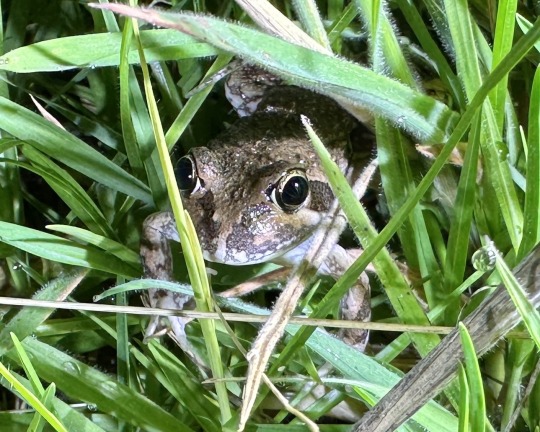

Tonight we also saw (and heard) A Lot of POBBLEBONKS! They were kind enough to stop by to say hello!
480 notes
·
View notes
Text
hey do yall want a fun plant fact??
This plant, right? Greater Plantain, scientific name Plantago major?

It's known as "white man's footprint", and the reason is so cool 2 me (Taken from the Wikipedia page for Plantago major):
The plant is native to most of Europe and northern and central Asia,[9][8][2] but has widely naturalised elsewhere in the world.[9][10][11][12][13]
Plantago major grows in lawns and fields, along roadsides, and in other areas that have been disturbed by humans. It does particularly well in compacted or disturbed soils. It is believed to be one of the first plants to reach North America after European colonisation. Reportedly brought to the Americas by Puritan colonizers, plantain was known among some Native American peoples by the common name "white man's footprint", because it thrived in the disturbed and damaged ecosystems surrounding European settlements.[14] The ability of plantain to survive frequent trampling and colonize compacted soils makes it important for soil rehabilitation. Its roots break up hardpan surfaces, while simultaneously holding together the soil to prevent erosion.[15]
The seeds of plantain are a common contaminant in cereal grain and other crop seeds. As a result, it now has a worldwide distribution.[10]
anyways download iNaturalist and the Seek app if yall like this kind of stuff i am having the time of my life identifying random plants!! i <3 collecting weird little facts about nature it's so fascinating!!
#i love ecology.... foaming at the mouth at how cool it is to just be able to learn about these things on the interwebs#holy shit#inaturalist#biodiversity#invasive species#environment#citizen science
87 notes
·
View notes